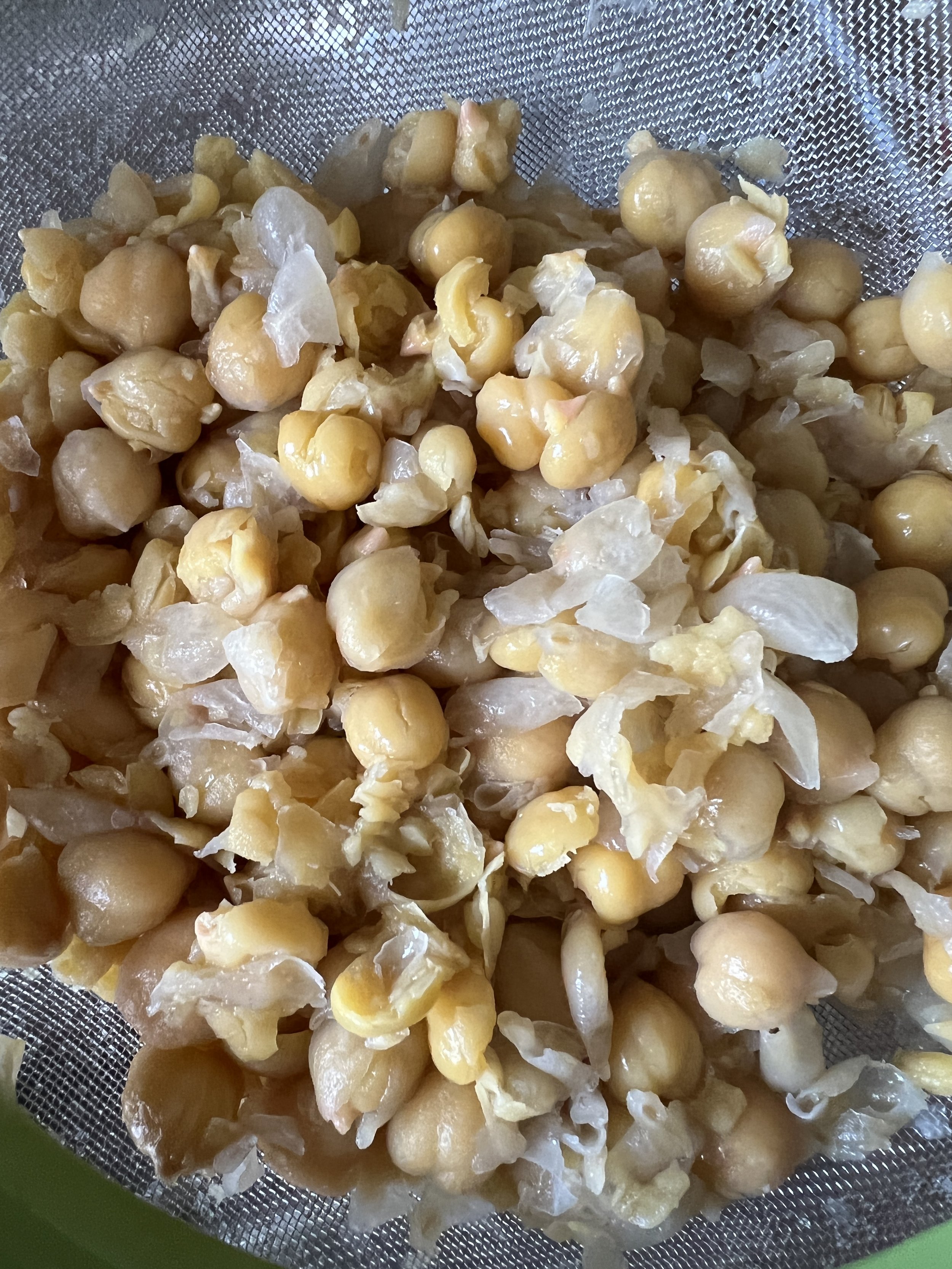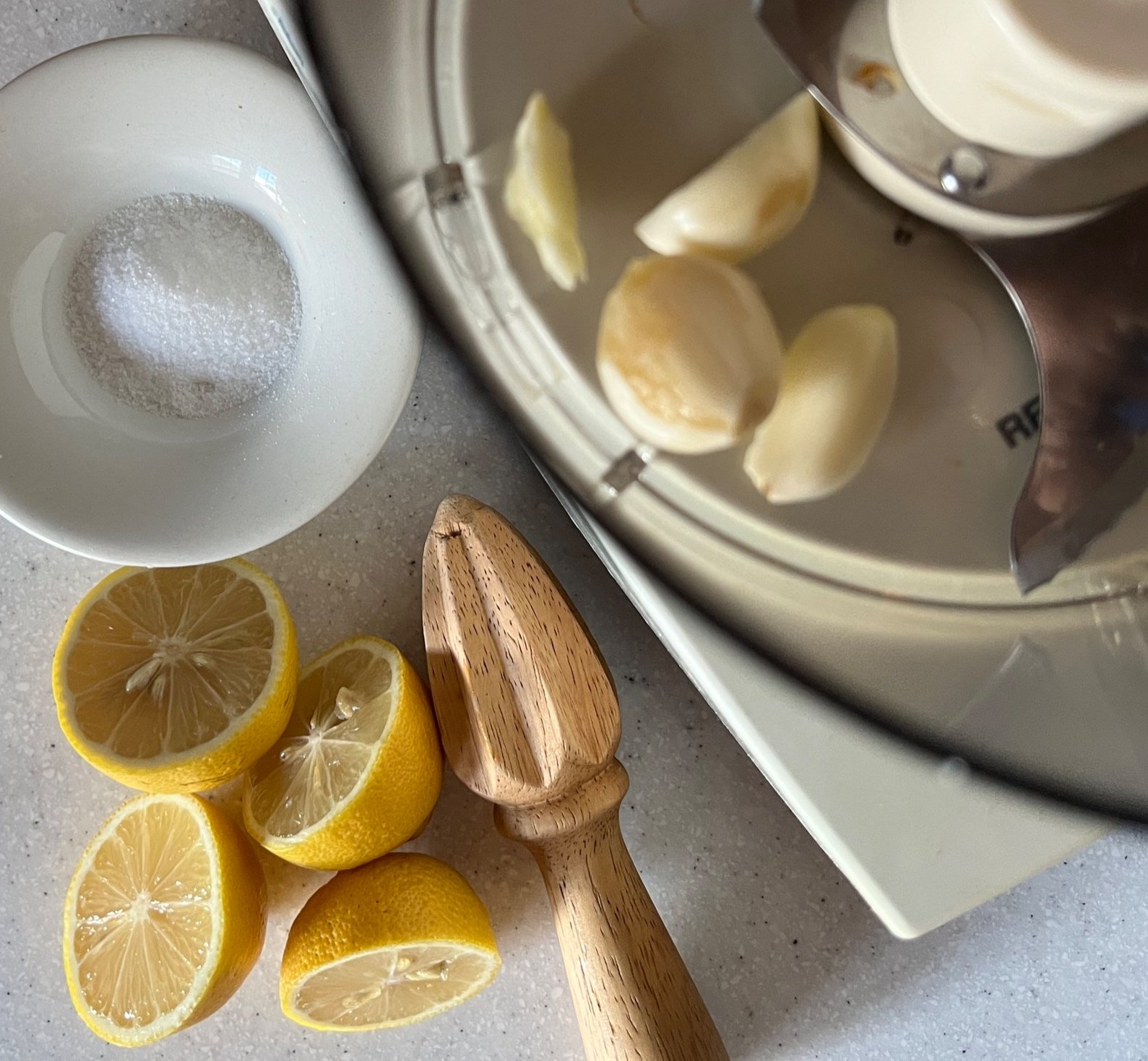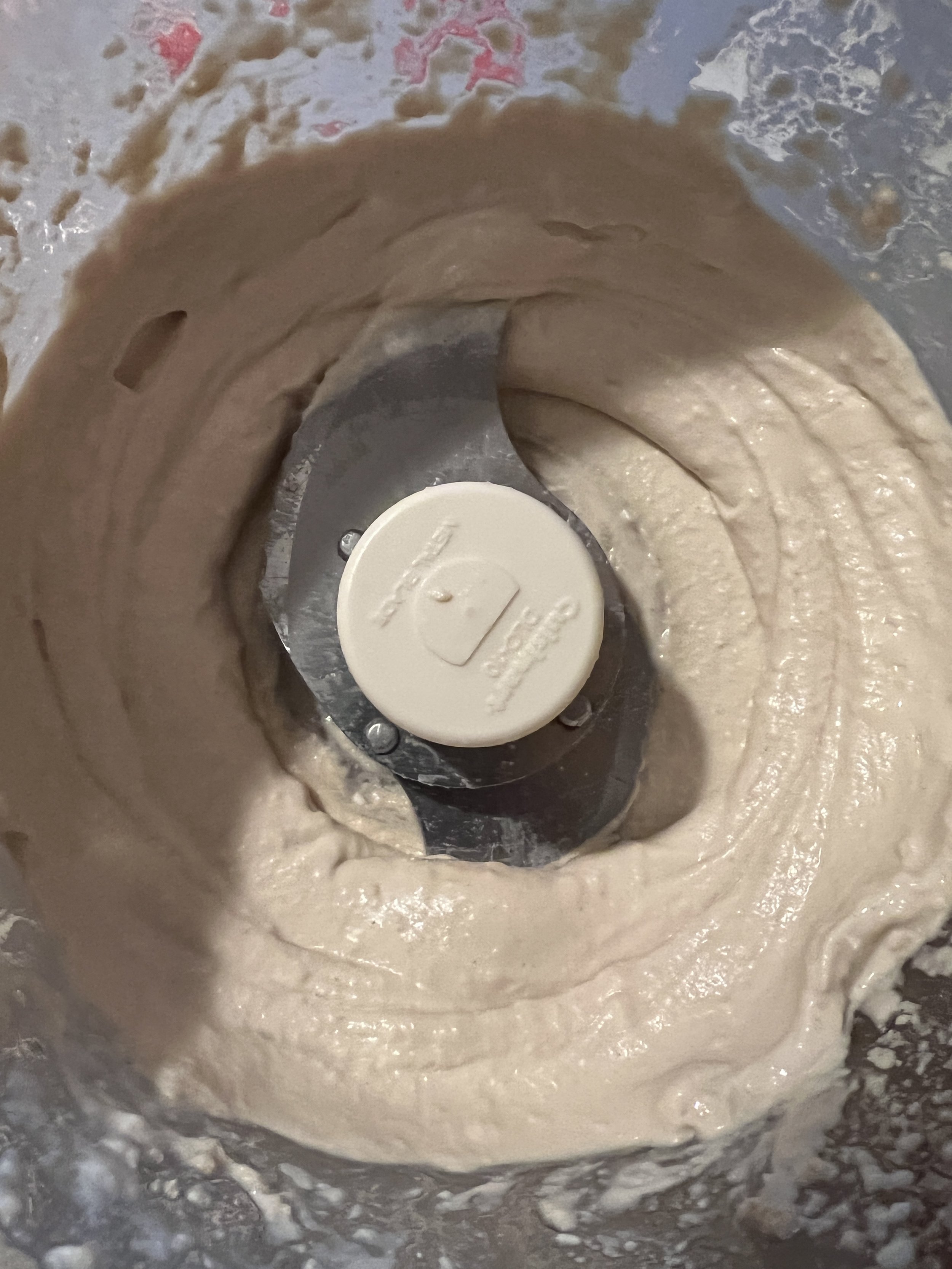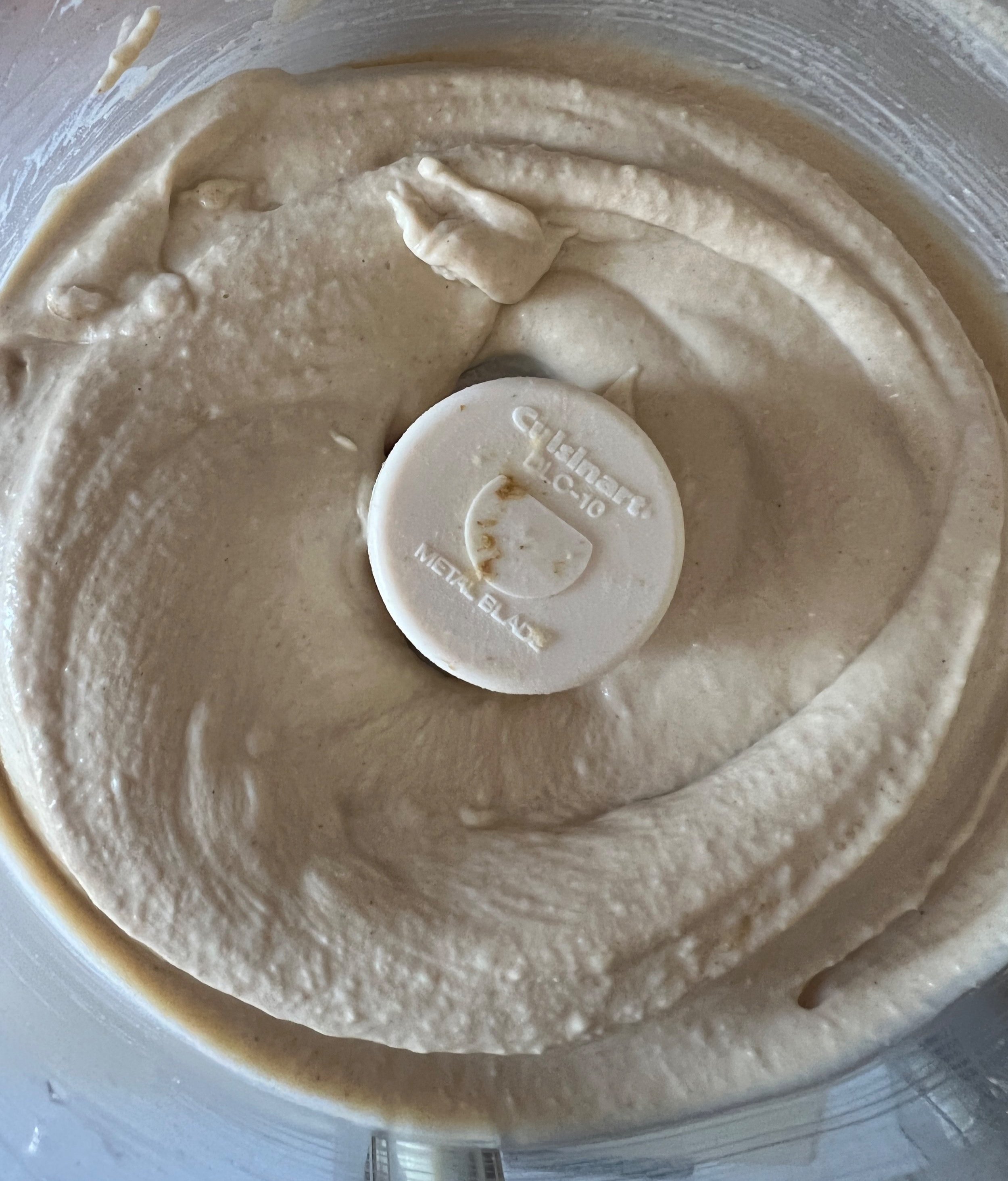I’ve been consumed with recreating the hummus I tasted after returning from a trip to Israel. This recipe lets me appreciate every ingredient, and how well they work together in the right proportions. For me, it’s like listening to a great piece of music, played by great musicians in a great space.
Experiment as you wish, but this is a good place to start. Make it yours. Tell me about it. Show me your hummus.
Little things make a big difference. Research showed me techniques that take this simple recipe to another level. Great pride is taken in making your hummus with a light, smooth, creamy - almost fluffy - texture. I mostly knew only of the denser, coarser store-bought hummus. This was a personal learning moment and pleasant surprise.
Mushy, overcooked chickpeas are key. The technique famed Israeli Chef, Michael Solomonov, uses works perfectly. Add baking soda to cooked chickpeas and boil for 20 minutes, until the skins begin to separate, and the chickpeas are soft and mushy. Strain, and rinse with cold water to remove the baking soda and cool them down. For the record, I tested this recipe with canned Trader Joe’s Organic, and Goya chickpeas.
The garlic situation: I like raw garlic, and often blanch it to remove the bitterness and bite. Researching this recipe taught me another brilliant technique to temper that. Again, Michael Solomonov comes through - mince the garlic in your food processor with the lemon juice and salt, and let it sit. The lemon juice and salt temper the raw garlic perfectly.
Fresh, quality ingredients! The lemon juice must be fresh! It’s worth it. ‘Nuf said.
Tahini: As Kathryne Taylor says, “don’t skimp on the tahini”. Not enough and your hummus might taste bland and lack depth. A cheap tahini may throw the balance of flavors off. A half-cup may seem like a lot, but it is essential for a transcendent hummus. My favorite tahini is Soom. Settling on a tahini is a whole other article. What’s important is to use what you like. I like Soom.
Ground cumin: My love for cumin is intense. Adding it to hummus is a Middle-Eastern and North African (think spice trading routes) variation. The underlying notes of cumin awaken memories of the hummus I so enjoyed while in Israel, and have tried to recreate here.
The ice cube: Thank you, Amanda Cushman, for sharing your hummus story and knowledge. This was the missing link for me to a light and fluffy hummus. Of course it makes sense. Adding the ice cube to the food processor emulsifies the tahini and lemon juice into something soft and billowy. Keep processing until the ice cube is fully incorporated. Other recipes call for ice water, but the ice cube really did the trick for me.
The final step: Once the mushy, cooled chickpeas are added to the food processor, let it run for about 2 minutes, total, stopping once or twice to scrape down the sides (again). I like to drizzle about a tablespoon of extra virgin olive oil in while it’s running for taste and texture. You can serve it right away, or chill in the fridge and let the flavors come together. Tastes amazing the next day, and the day after that. Can’t say beyond 2 days, ours is gone by then.
The final, final step: Really good olive oil is usually drizzled on top, and seasonings like ground sumac or paprika, dukkah and za’atar (another rabbit hole, another article) are sprinkled over. The accompaniments are endless: fresh chopped parsley, spicy green zhoug, roasted red peppers, roasted garlic, etc. Scoop it up with pieces of pita and veggie slices - extra points for grilling them. Put it out on the table as a condiment and spoon some on your plate.
Seriously, make this recipe. Embrace these extra steps (Honestly, what’s an extra 20-30 minutes for mushy chickpea greatness?). Use fresh lemon juice (no cheating), the whole 1/2 cup of tahini (no skimping), marvel at the ice cube alchemy, and you will see and taste the difference.
Promise. xojo
Transcendent Hummus Recipe
Credit: Why mess with perfection? Recipe adapted from Kathryne Taylor’s adaptation of Michael Solomonov, via The New York Times and Bon Appetit, and Yotam Ottolenghi; with a twist from Amanda Cushman.
Makes 2 Cups; 30 Minutes
Ingredients
2 Cups Chickpeas, cooked, or 1 can, drained
1/2 tsp Baking Soda
2-4 Tablespoons Lemon Juice, freshly squeezed (I use 4 Tbsp)
1-2 Cloves Garlic, peeled (I use 2)
1/2 tsp Sea Salt
1/2 Cup Tahini
1/2 tsp Ground Cumin
1 Ice Cube or 2 Tablespoons Ice Water
1 Tablespoon Extra Virgin Olive Oil, plus more for serving
Seasonings for the top: Za’atar, dukkah, fresh chopped parsley, ground sumac or paprika
Directions
1. In a medium pot, add cooked chickpeas, enough water to cover by 2 inches, and baking soda. Stir and bring to a boil. Let boil for 20 minutes, until chickpeas are mushy and skins are separating. Strain and rinse with cold water to cool down and rinse off the baking soda.
2. While chickpeas are cooking, make the tahini base. Add salt, lemon juice, and garlic to a food processor, and pulse to finely chop the garlic. Scrape down the sides and let it rest 5-10 minutes.
3. Add tahini and cumin to food processor and blend until smooth. Scrape downs sides of the bowl.
4. With food processor running, drop the ice cube in through the top. Keep running until ice cube is incorporated. Mixture will be very smooth, light and fluffy. Scrape down that bowl.
5. Add cooled and drained mushy chickpeas to food processor. Pulse to incorporate, then start processing, stopping to scrape down the sides of the bowl as needed. Process until the mixture is nice and smooth, drizzling in 1 tablespoon extra virgin olive oil, if desired, while running, about 2 minutes total. Scrape into a bowl, cover and chill, or serve right away.
6. Top with a drizzle of olive oil, za’atar, and ground sumac (or whatever you like), and serve your meal, or with pita and veggies for dipping. If there’s any left, store covered in the fridge.







